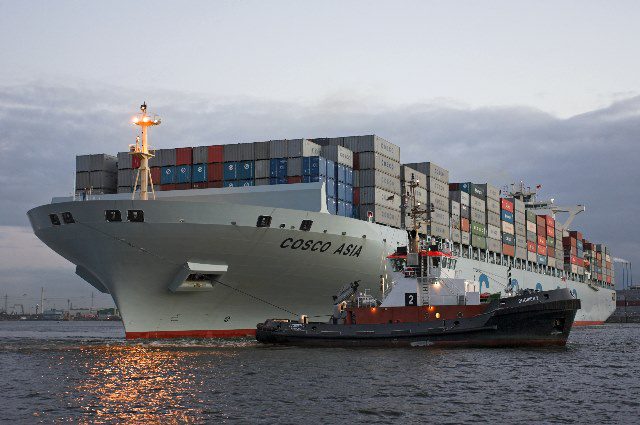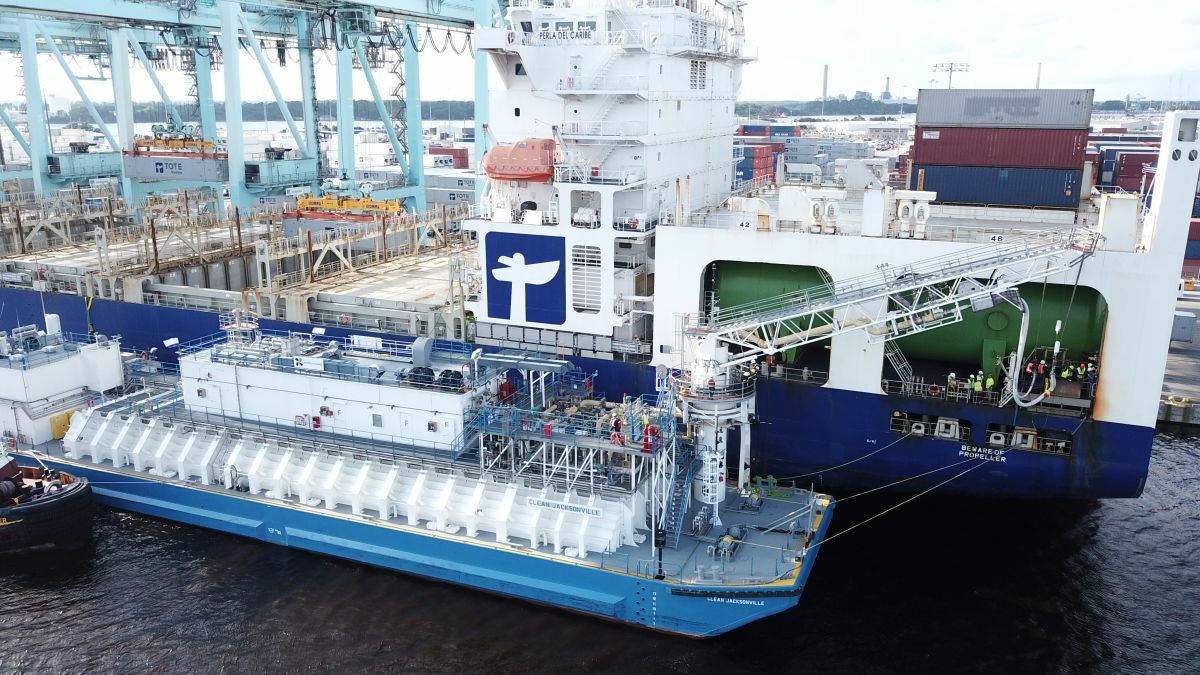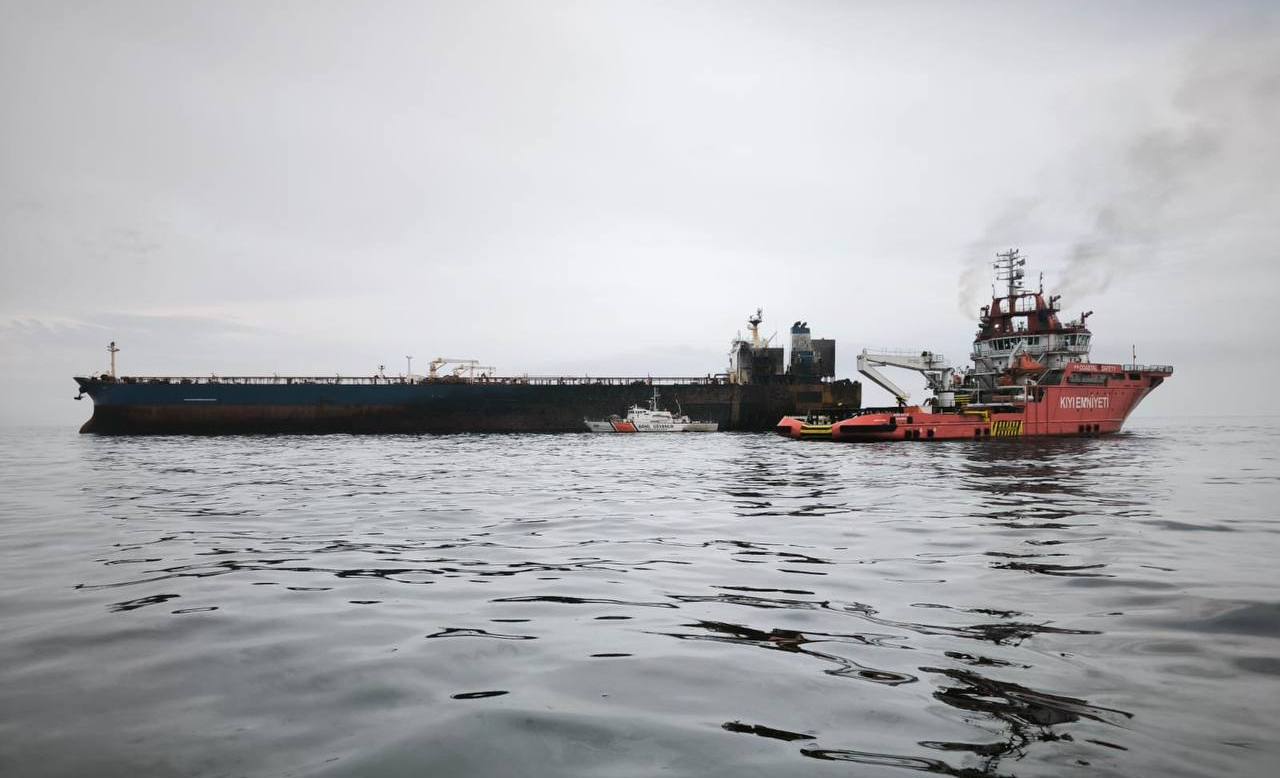Photo courtesy Port of Hamburg
 By John Kemp
By John Kemp
LONDON, April 21 (Reuters) – Lower oil prices are sharply reducing the cost of shipping merchandise from Asia to the United States and Europe as the cost of bunker fuel tumbles.
Container shipping companies deal with the volatility in fuel prices by adding a separate bunker adjustment factor or fuel surcharge to their freight rates.
Fuel can account for more than 60 percent of the total operating costs of moving freight across the oceans so the surcharges are one of the most important elements of total transportation costs.
Surcharges are recalculated quarterly based on the average cost of fuel over a previous 13-week period. So the charge for April-June 2015 is based on fuel costs between December 2014 and February 2015.
Other adjustments are made periodically to reflect changes in average fuel consumption, sailing time, vessel capacity and fuel quality changes.
In September 2008, shortly after oil prices had peaked, shipping lines were adding a surcharge of almost $1,500 to the cost of shipping every 40-foot container between Asia and the West Coast of the United States.
By the second quarter of 2014, lower oil prices and slow steaming, which helped offset the impact of stricter sulfur standards, had cut charges on the eastbound transpacific route to $527 per 40-foot container.
The collapse in oil prices has since cut surcharges by a further 27 percent. From April 1, major shipping lines will add a surcharge of just $385 per 40-foot container on eastbound transpacific routes from Asia to the United States.
On westbound routes from the U.S. West Coast to Asia, surcharges have been reduced 31 percent, from $703 per 40-foot container in the second quarter of 2014 to $481 currently.
Surcharges between the United States and Asia are published by the Transpacific Stabilization Agreement (TSA), a forum for shipping lines to meet and exchange market information and research (www.tsacarriers.org).
The TSA, which has 15 members, including Maersk, COSCO and Hanjin, has a limited exemption from antitrust laws to develop voluntary guidelines for rates and surcharges as well as harmonizing other aspects of container shipping service.
The surcharge structure ensures most of the benefit from cheaper bunker fuel prices will be passed on to shippers in the form of lower total freight charges (“Clear evidence box carriers are passing-on bunker savings” April 1).
In theory, shipping lines could try to capture some of the benefit by offsetting lower surcharges with higher basic freight rates.
But the container market is currently over supplied, with a new generation of ultra-large ships entering service, limiting the opportunity to boost basic freight margins (“Fueling the rate drop” March 29).
Cheaper freight costs will filter through to the cost of transporting everything from clothing and foodstuffs to cars and consumer durables.
While freight charges are typically a small proportion of the final sale price, they are large in comparison with profit margins, so cheaper transportation has a direct impact on corporate profitability.
Cheaper bunker fuel therefore acts as a stimulus to large parts of the global economy and should help raise global GDP slightly faster as its impact filters through.
The impact from the shipping sector alone is relatively small but when combined with other fuel-sensitive sectors such as aviation and road transport the total effect is significant.
Marine transport accounted for almost 5.4 million barrels per day of fuel consumption in 2010, equivalent to almost 6 percent of global oil production, according to the U.S. Energy Information Administration.
The maritime sector has been one of the fastest growing sources of fuel consumption, reflecting the impact of globalization and the rise of Asia. Consumption increased by two-thirds over the decade from 2000 to 2010, with demand rising by almost 5 percent per year.
Bunker consumption includes everything from oil tankers and dry bulk carriers for iron ore, coal and grain to ocean-going container ships, coastal shipping and recreational craft. But the container shipping sector has been one of the fastest growing and accounts for a large share of increased fuel consumption.
Over the last decade, fuel demand has actually been restrained by the high cost of residual fuel oil and marine diesel, which encouraged many shipping lines to adopt practices such as slow steaming.
With lower fuel costs, however, container ships, oil tankers and bulk carriers are speeding up to cut total voyaging costs – sacrificing more fuel consumption for shorter journey times and faster turnarounds.
In the medium term, over a one to five-year period, the global shipping industry could be a significant source of extra petroleum demand if bunker costs remain low. (Editing by Susan Thomas)
© 2015 Thomson Reuters. All rights reserved.

 Join The Club
Join The Club











